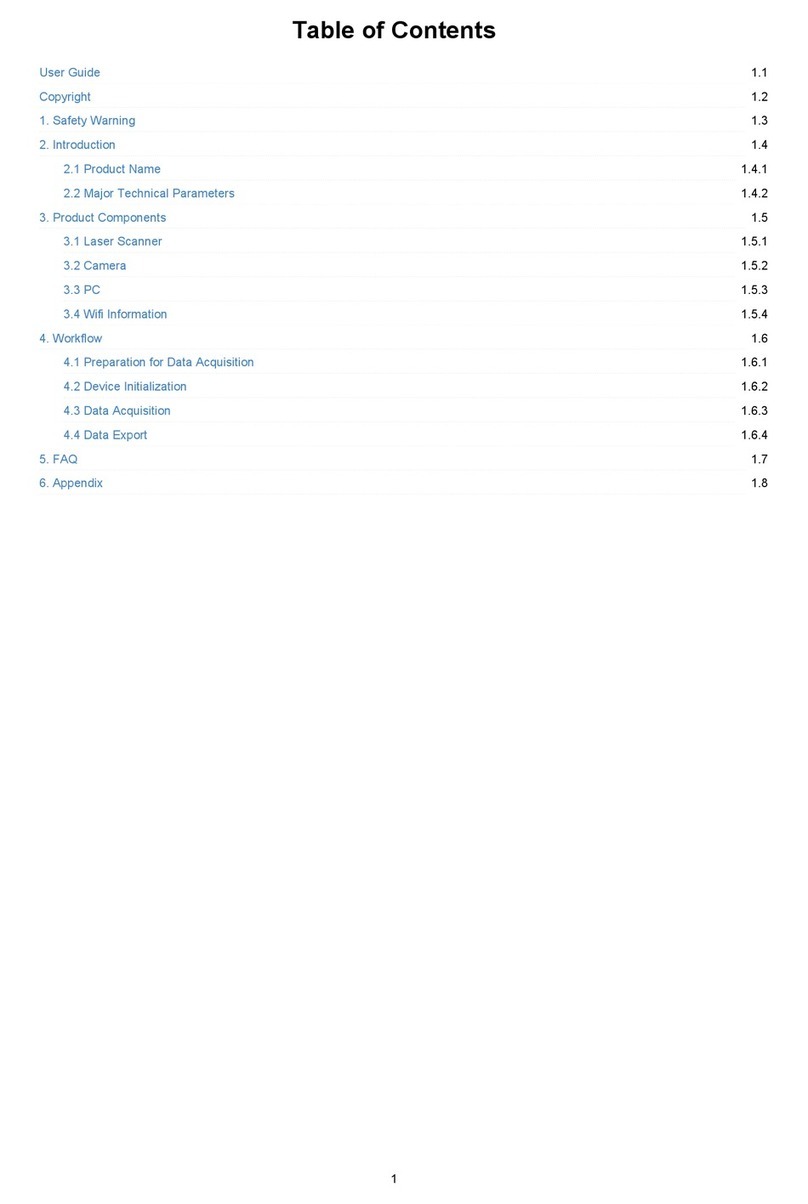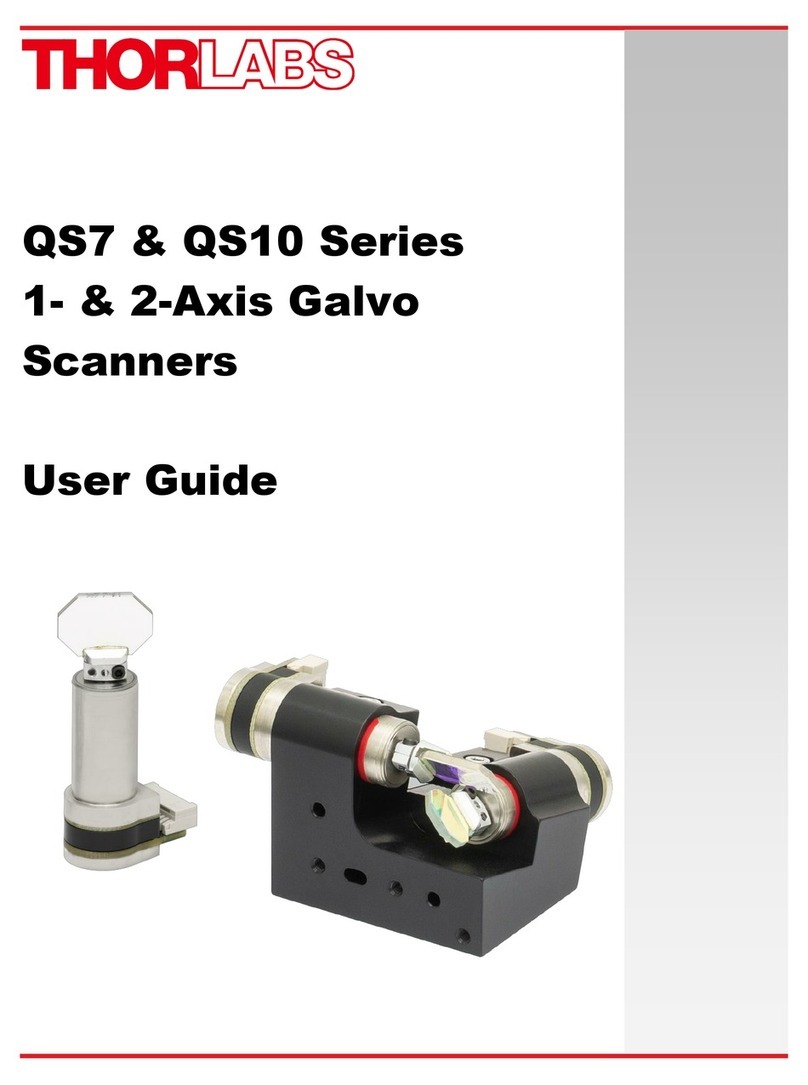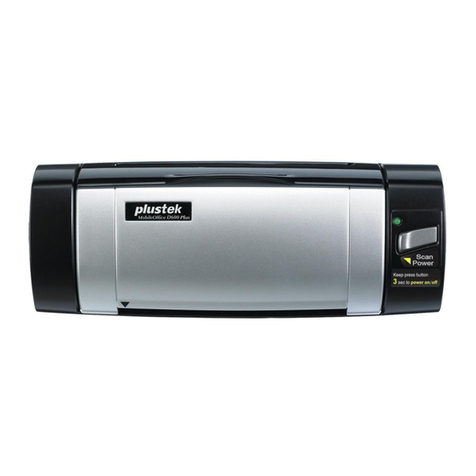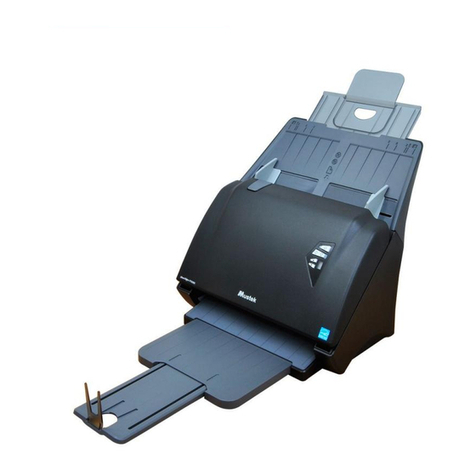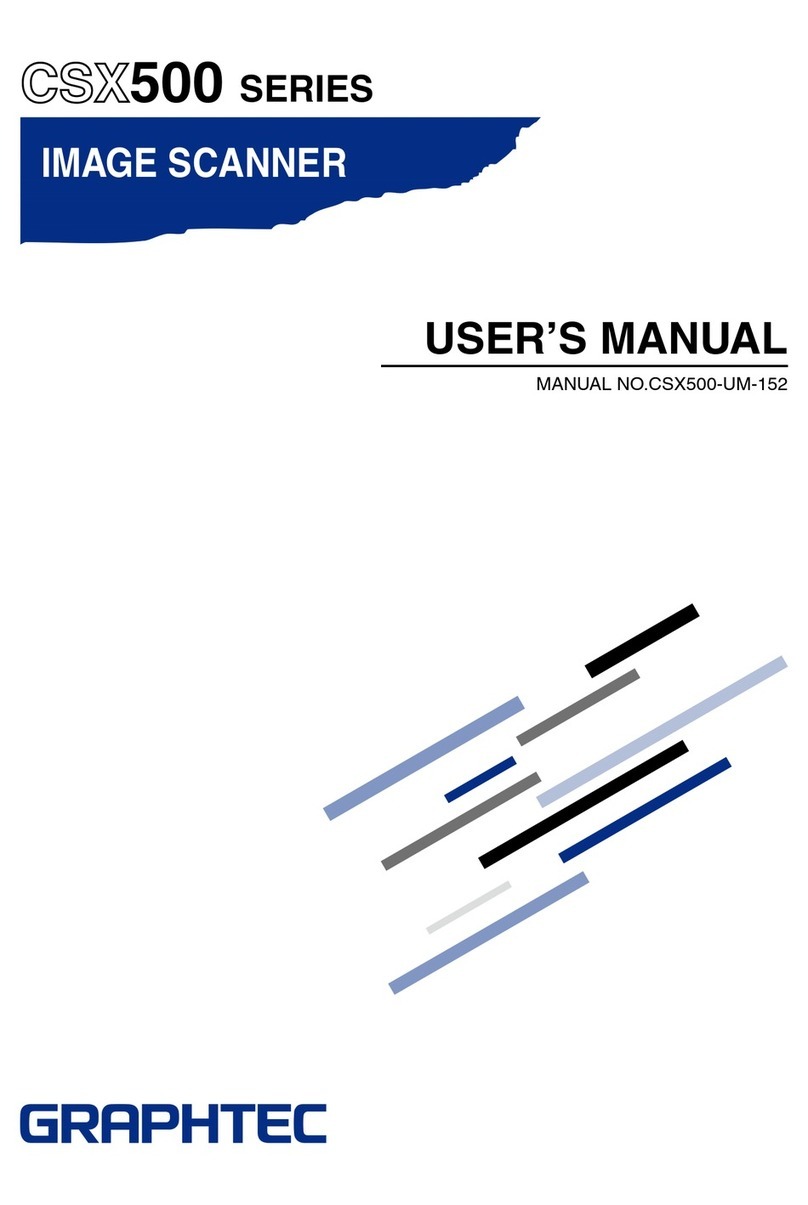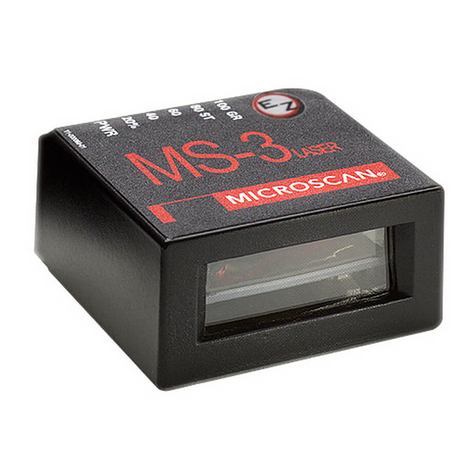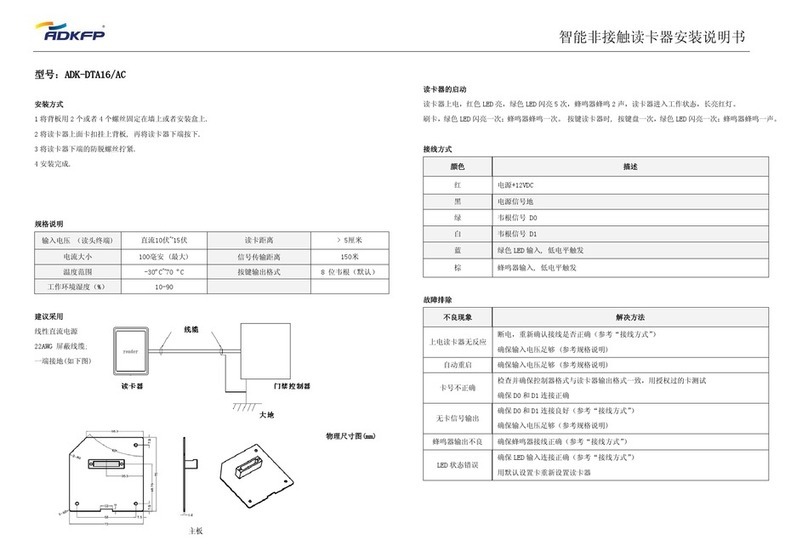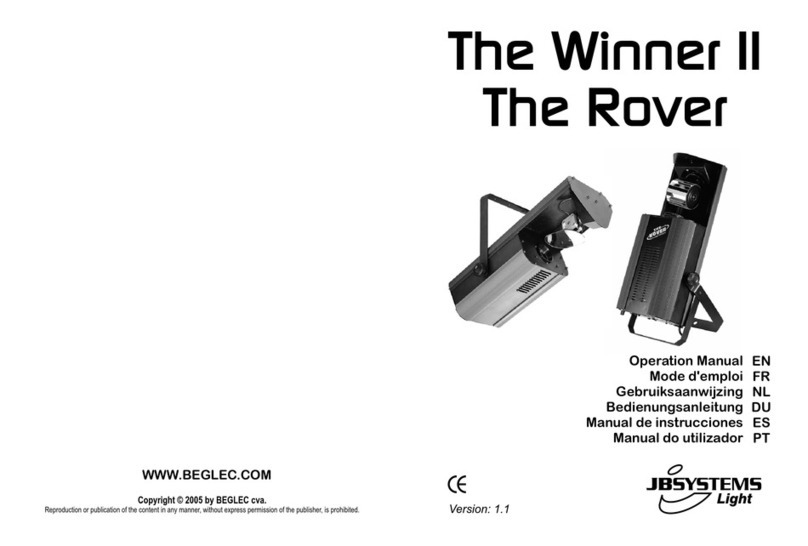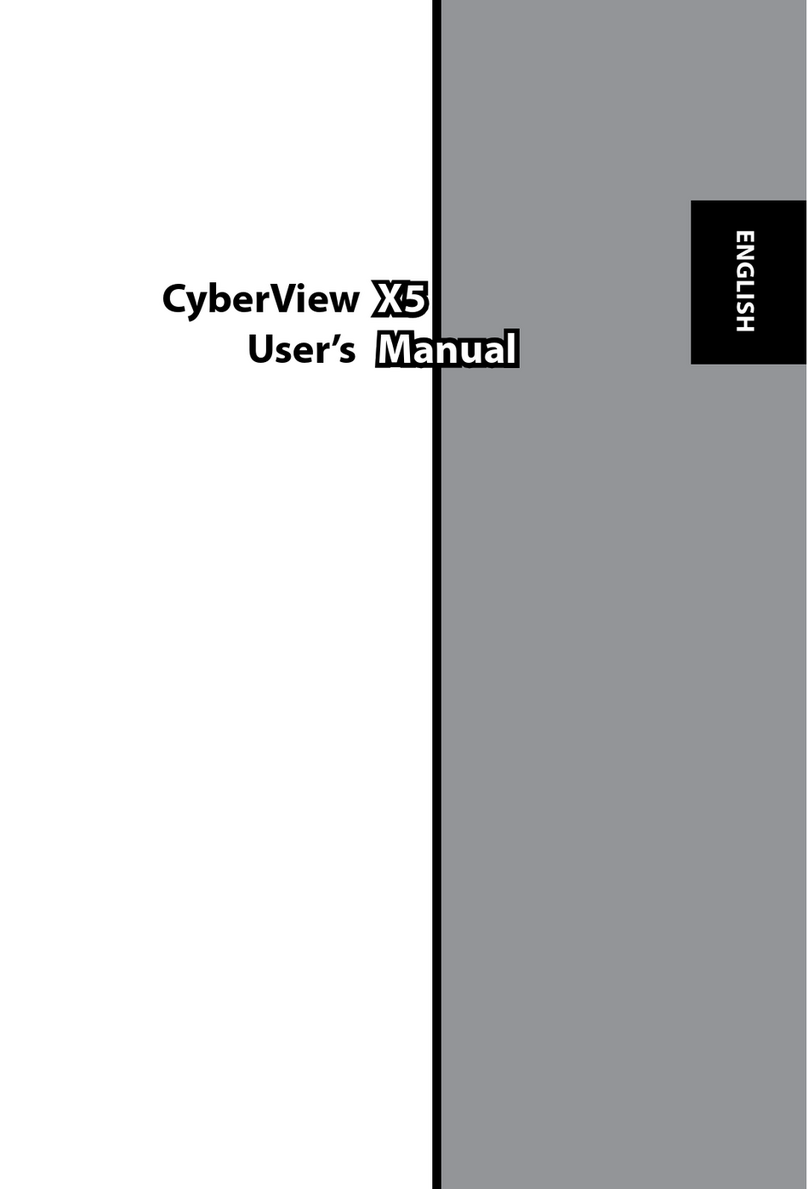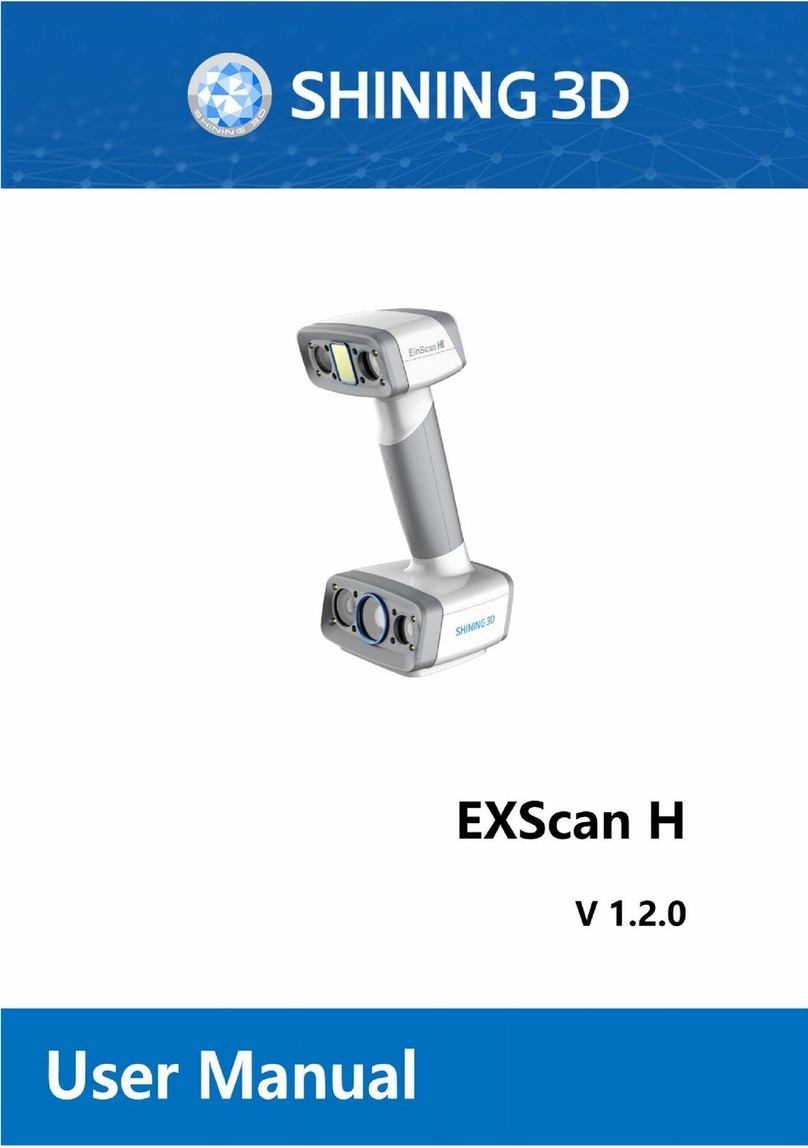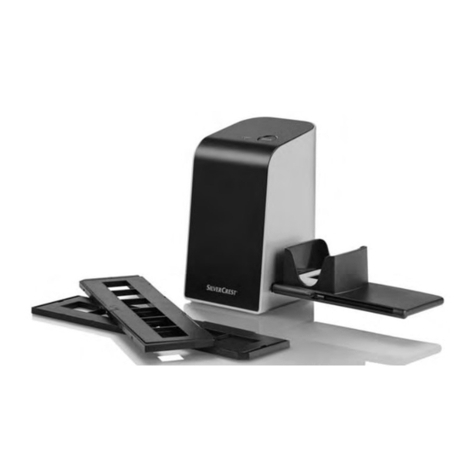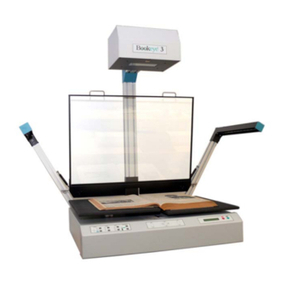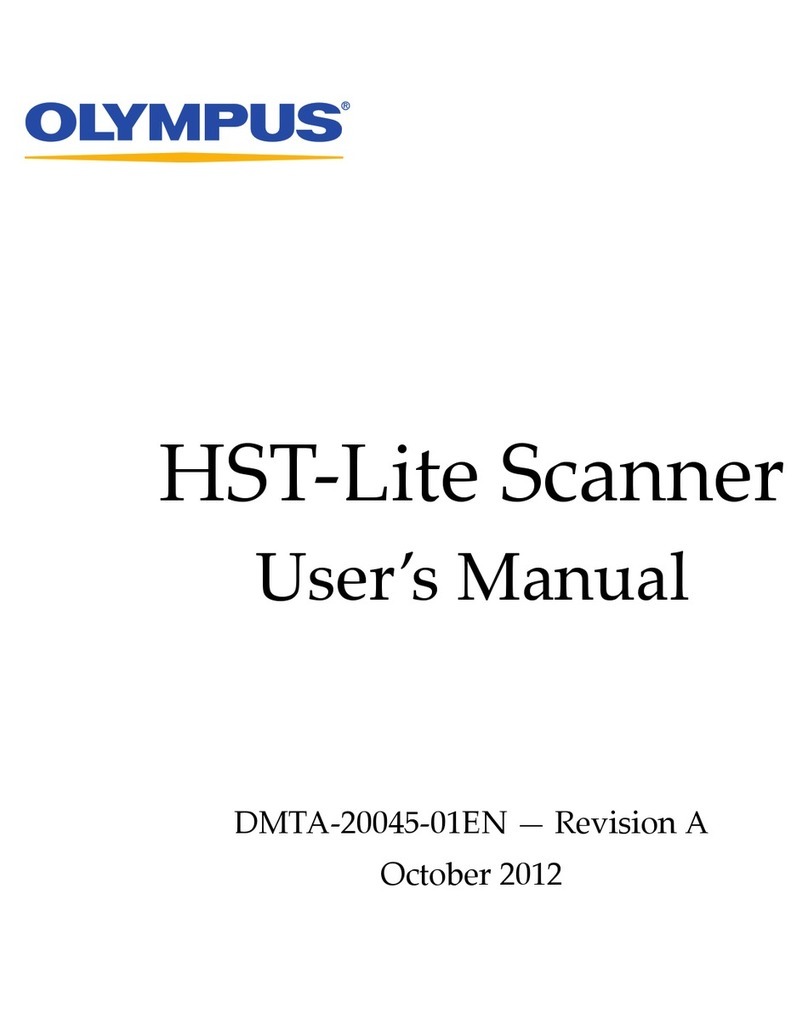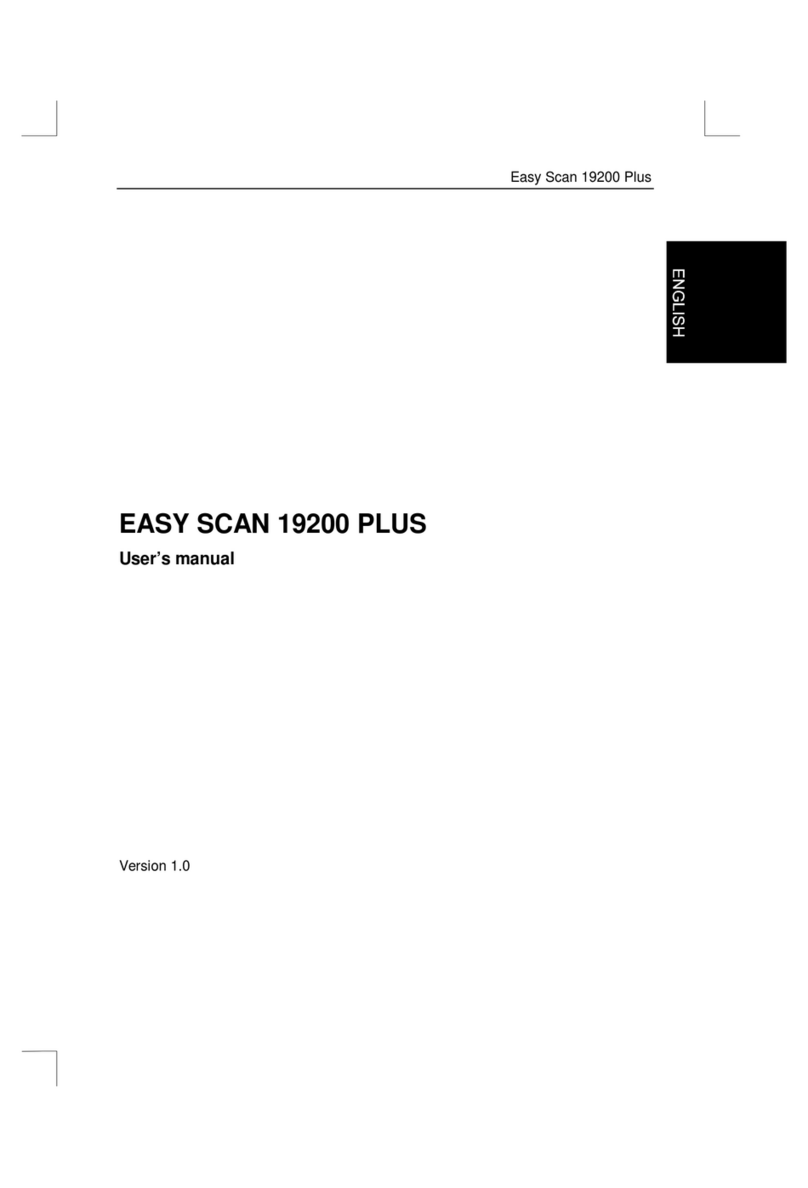GreenValley LiAir X3C-H User manual

LiAir X3C-H User Guide • GreenValley International
LiAir X3C-H
UAV LiDAR System
User Guide
GreenValley International Inc.

LiAir X3C-H User Guide Contents
Contents
1 User Instructions ......................................................................................................................1
2 Product Introduction ..............................................................................................................4
2.1 Technical Specifications.............................................................................................5
2.2 Product Structure........................................................................................................7
2.3 System Components..................................................................................................9
2.3.1 Laser Scanner...................................................................................................9
2.3.2 Integrated Navigation System................................................................. 11
2.3.3 Storage and Control Unit.......................................................................... 12
2.3.4 Camera............................................................................................................ 12
2.3.5 GNSS ground station.................................................................................. 13
3 Package List............................................................................................................................ 14
4 Data Acquisition.................................................................................................................... 15
4.1 Base Station Setup................................................................................................... 15
4.2 Installation .................................................................................................................. 16
4.3 Parameters Settings................................................................................................. 17
4.4 Data Acquisition ....................................................................................................... 20
5 Data Download...................................................................................................................... 21
5.1 X3C-H data download............................................................................................ 21
5.2 Base station data download ................................................................................. 21
6 Data Georeferencing ........................................................................................................... 22

LiAir X3C-H User Guide Contents
6.1 Project Folder Structure ......................................................................................... 22
6.2 Open Project.............................................................................................................. 24
6.3 Select and Configure Parameters ....................................................................... 25
6.3.1 POS Processing Settings............................................................................ 25
6.3.2 Laser Scanner Settings............................................................................... 29
6.3.3 Camera Settings........................................................................................... 29
6.4 Georeferencing Point Cloud Data....................................................................... 30
7 System Transportation and Maintenance..................................................................... 40
7.1 Operation Notice...................................................................................................... 40
7.2 Equipment Maintenance........................................................................................ 41

LiAir X3C-H User Guide User Instructions
1
1User Instructions
Safety Precautions
1. LiAir X3C-H system use Class 1 (IEC60825-1:2014) eye-safe laser sensors. If
you have any concerns, please contact GVI for details.
2. Please read this manual carefully before operating the system, and the
system operator must be at least 18 years old.
3. Please stop using the system if you hear noticeable noises, warnings, or while
the device is damaged. Contact the manufacturer's technicians for
maintenance in time. Forcible use may cause permanent damage to the
system.
4. Strictly follow the tutorials, advises, warnings, and other cautions included in
this user guide as well as other documents provided by GVI.
5. Do NOT use any power supply outside the specified voltage range (12~24V,
1A@24VDC). Incorrect voltage supply may cause permanent damages to the
integrated instruments and other hazards. Damage caused by the use of an
unauthorized power supply are not covered by the Product Warranty.
6. Keep the power, USB, network and other connector ports clean and dry, and

LiAir X3C-H User Guide User Instructions
2
do not insert other objects other than the connector.
7. Tampering with the product is strictly prohibited and will void the Product
Warranty. Any repair, modification, or upgrade must be performed by GVI
technician or authorized service provider.
8. This product is a high-precision mapping and surveying instrument that
must be handled with care. This product should by stored and transported in
the protective case provided with the LiAir X3C-H at the time of purchase or
in a productive case authorized for use by GVI.
9. When not in use, store LiAir X3C-H system and accessories in a cool and dry
environment. Make sure the device is powered off when performing
maintenance and cleaning.
10. The working temperature of this equipment is -20℃~50℃. Below/exceed
this temperature range, it may cause wrong measurement results, data loss
or equipment damage.
11. Before using the equipment, please ensure that the operating environment is
far away from the source of electromagnetic interference.
12. There are corresponding specifications for battery use and storage. Please
refer to the lithium battery use/storage specifications for details.
13. After the equipment is scrapped, please do not throw it directly into the trash
can. It can be sent back to the manufacturer, and the manufacturer will

LiAir X3C-H User Guide User Instructions
3
handle it on your behalf.
GreenValley International Inc. reserve the right to explain the above terms.
GreenValley International Inc. March 5, 2023

LiAir X3C-H User Guide Product Introduction
4
2Product Introduction
LiAir X3C-H is a new light and compact UAV LiDAR system developed by
GreenValley International through integrating a 360° scanning LiDAR sensor,
self-developed inertial navigation system, and 26MP HD mapping camera with a
high computing power edge computing platform. With a highly integrated
design, it can be used for topographic mapping, forestry measurement and
power line inspection. Equipped with LiGeoreference/LIDAR360 software
independently developed by GreenValley International, it can provide one-stop
mapping solutions for customers in an array of industries such as utilities power
inspections, forestry management, building façade scanning, and many more.
The LiAir X3C-H (shown above) mainly consists of three components: a LiDAR
scanning system, an inertial navigation system, and a storage & control system.
The main components include:
1. The dynamic differential GNSS receiver for measuring the spatial position of
the reference point for emitting the LiDAR signals;
2. Attitude measurement equipment for measuring the attitude parameters,

LiAir X3C-H User Guide Product Introduction
5
namely inertial measurement unit (IMU);
3. Laser ranging equipment used to measure the distance between the laser
signal emission reference point and the ground point, that is, the core part of
the entire integrated system, the laser scanner;
4. The storage control system, which is used for data storage and device control,
receiving the signals transmitted from the ground to the airborne, and
controlling the parameters adjustment, data acquisition and downloading.
5. Power supply and management unit.
Operating principle:
1. The system controls the device to collect data by receiving and executing
commands sent by the hardware switch.
2. Then the raw data collected are stored in the TF card and copied to the local
computer for processing after the collection is completed.
3. Finally, the LiGeoreference software is used to combine and georeference the
position and angle information under the coordinate system of the LiDAR
system with the POS data to obtain accurate geographic coordinates.
2.1 Technical Specifications
X3C-H System Specifications
Weight 1.12kg

LiAir X3C-H User Guide Product Introduction
6
Scan Range(Sunny, Outdoor
@100 klx)
80 m @ 10% reflectivity;
200 m @ 54% reflectivity;
300 m @ 90% reflectivity
Field of view 360° (Horizontal) ×40.3° (Vertical)
Number of Returns 3
Scan Rate
first return: 640,000 points/s
dual return: 1,280,000 points/s
triple return: 1,920,000 points/s
Camera Pixels 26MP
POS Attitude Accuracy
(post-processing)
0.008°
POS Azimuth Accuracy
(post-processing)
0.038°
System Accuracy (Vertical) 5 cm@70m AGL
Size 153*100*133mm
Communication WIFI
Voltage 12~24V, 1A@24VDC
Power Consumption 24W

LiAir X3C-H User Guide Product Introduction
7
Operating Temperature -20~50℃
Storage Temperature -30~60℃
UAV Model DJI M300 RTK
Data Georeferencing Software
LiGeoreference point cloud data
georeferencing software
2.2 Product Structure
1— Power Port (PWR): Connect the power cable to power up the system.
2— Switch button (ON/OFF) and indicator: The button shared for power-on and
project creation/data capture and displays the working status of the device.
3— USB-C port: For the communication between the computer and the device
for firmware upgrade and data download.
4— Memory card slot: with a built-in 256G TF card for data storage.
5— GNSS1: First (Main) antenna port.
1
2
3
4
5
6

LiAir X3C-H User Guide Product Introduction
8
6— GNSS2: Second antenna port.
Meaning of status indicator status:
LED Color/Status Description
ON/OFF
Flashing Red (Four
Times a Second)
System is powered on and initializing
Solid Green System initialization completed
Flashing Green
(Once per second)
The project has been created, the inertial
navigation and laser data is being recorded, and
the system is working normally.
Flashing Red
(Once per Second)
The
project has been created, the inertial
navigation data is being recorded, and the
system is working abnormally
Solid Red
The system status is abnormal, the reasons
include:
1. TF card space is less than 15G
2. M300 RTK PSDK module is not activated
3. IMU misalignment

LiAir X3C-H User Guide Product Introduction
9
4. Camera self-test failed
5. The laser scanner is not synchronized
2.3 System Components
2.3.1 Laser Scanner
The laser scanner is the core of the system. The LiDAR uses the laser as the
emitting light source and the photoelectric detection sensor as the receiving
element. According to the principle of laser ranging, the distance and angle are
measured and recorded, so as to determine the azimuth information of the
measured object.
The transmitter in the LiDAR emits a beam of ultra-short light pulses on the
object and diffusely reflects back to the receiver. The speed of light is known, and
the distance from the target object to the sensor is calculated by the flight time
of the laser beam in the air.
Transmitter
Receiver
The surface of
object
t
∆
Transmitter
Receiver
The surface of
object
t
∆
LiDAR ranging equation:
Where: S is the distance from the sensor to the target; c is the light speed; and

LiAir X3C-H User Guide Product Introduction
1
△t is the round-trip time of the laser beam.
LiAir X3C-H is integrated with the HESAI 32-channel 360° scanning laser with the
following parameters:
Laser Scanner Parameters
Scanning Principle Rotating Scan
Number of Channels 32
Scan Range 80 m (@ 10% reflectivity)
Measurement Frequency 1920 kHz (@ 3 returns)
Scanning Frequency 5Hz~20Hz
Horizontal field of view 360°
Vertical Field of View -20.8°~ +19.5°
Vertical Angle Resolution 1.3°
Laser Class Class 1 Eye-safe
Number of Returns 3

LiAir X3C-H User Guide Product Introduction
1
Ranging Accuracy 1 cm
Note: The laser sensor cannot be directly irradiated with strong laser light
(including two sensors facing the light), so as to avoid high-intensity laser
damage to the receiving sensor.
2.3.2 Integrated Navigation System
The airborne Position Orientation System (POS) is an inertial measurement unit
(IMU) and Global Navigation Satellite System (GNSS). POS systems are used to
accurately determine system velocity, position, and attitude values at specific
moments in time.
1. Global Navigation Satellite System (GNSS)
Global navigation satellite system, or (GNSS) on LiAir X3C-H supports, mainly
includes GPS, GPS (the U.S.), Galileo satellite navigation system (Europe), BeiDou
Navigation Satellite System (China), and GLONASS (Russia). The GNSS of LiAir
X3C-H includes the aviation GNSS antenna and the base station antenna.
2. Inertial Measurement Unit (IMU)
Inertia measurement unit, or IMU, consists of a high-accuracy three-axis
gyroscope and a high-accuracy three-axis accelerometer. It is the benchmark
center of the LiDAR system. Its role is to get the position and orientation
information without external reference data.
The LiAir X3C-H integrates a 3-axis MEMS (Micro-Electro-Mechanical System)

LiAir X3C-H User Guide Product Introduction
1
gyroscope, 3-axis MEMS accelerometer and dual GNSS/BD receivers into one
system, the POS system. Together the POS system components gather
multi-reference parameters that provide accurate, effective and reliable by
optimization algorithm of integrated navigation system.
3. Inertial Navigation Accuracy
System Accuracy
(post-processing)
Azimuth 0.038° (1σ)
Attitude 0.008° (1σ)
Data frequency 200Hz
2.3.3 Storage and Control Unit
Main functions:
1. To receive control information from ground station and accurately send the
commands to the corresponding sensors.
2. To control and coordinate the normal operation of all sensors.
3. LiDAR data, inertial navigation data, photos and Log information are stored in
the system's memory card.
2.3.4 Camera
The main parameters of the built-in camera are listed below:
Sensor APS-C

LiAir X3C-H User Guide Product Introduction
1
Lens 16mm fixed focal length lens
Effective pixels 26 MP
Pixel size 3.76um
Image size 6252*4168
DFOV 83°
2.3.5 GNSS ground station
The GNSS ground (base) station is mainly used to observe the same point for a
long time to reach a high single-point accuracy as a differential reference for the
UAV mobile station. A GPS ground station is composed of a GPS antenna, a GPS
receiver and a power supply.

LiAir X3C-H User Guide Package List
1
3Package List
①LiAir X3C-H LiDAR System×1 ②USB cable×1 ③ GNSS antenna
assembly×1 ④ GNSS antenna×2 ⑤ 256G TF card × 1 ⑥ Card reader × 1
⑦ USB flash drive × 1 ⑧ Tool × 1 ⑨ Document × 1
Note: The actual package list may vary depending on delivery requirements.

LiAir X3C-H User Guide Data Acquisition
1
4Data Acquisition
4.1 Base Station Setup
1. Select an open area for positioning
Place the GNSS antenna at an open area in order to ensure the antenna can get
access to the GNSS satellites as many as possible. Apart from this, the placement
spot of the GNSS antenna should be stable and far away from the
electromagnetic interference.
Open areas refer to those places which are not covered by high objects. The
maximum elevation mask angle of surrounding objects should be less than
15°.
The source of strong electromagnetic interference might be cellular base
station, high voltage transmission lines, or objects with high reflectance (e.g.,
mirror, large water body) which may cause the multipath propagation.
2. Set up base station
Set up the base station on the selected base station point. For surveying and
mapping projects or other projects with high precision requirements, a tripod
should be erected in accordance with specifications, and the base station should
be erected on the tripod.
Please refer to the LiBase user manual for more specific operation process.

LiAir X3C-H User Guide Data Acquisition
1
Note: The base station needs to start collecting data 15 minutes before the flight
operation, and stop collecting data 15 minutes after the operation ends.
4.2 Installation
1. Mount the device to the DJI M300 UAV after checking that the shock
absorbing module is not broken or damaged.
2. Install the GNSS antenna assembly with GNSS1 connected to the rear
antenna and GNSS2 to the front antenna. (The flight direction is specified as
Forward)

LiAir X3C-H User Guide Data Acquisition
1
3. Confirm that the TF card has sufficient free space, insert it into the device,
and remove the laser and camera protection covers.
4. Turn on the remote controller and power on the UAV
5. Press and hold the ON/OFF button of the device for more than 3 seconds to
turn it on.
Check the indicator status: flashing red quickly indicates the system powered
on and initializing; and solid green indicates the system initialization has been
completed and the device works normally. Please refer to Descriptions of
System Indicators for more specific descriptions of indicators
4.3 Parameters Settings
LiAir X3C-H will remember the parameters last set and you can skip this step if
no modification is required. LiAir X3C-H mainly contains laser parameters,
camera parameters and etc. The parameters can be modified by either logging
into the Web client of the device.
Table of contents
Other GreenValley Scanner manuals


